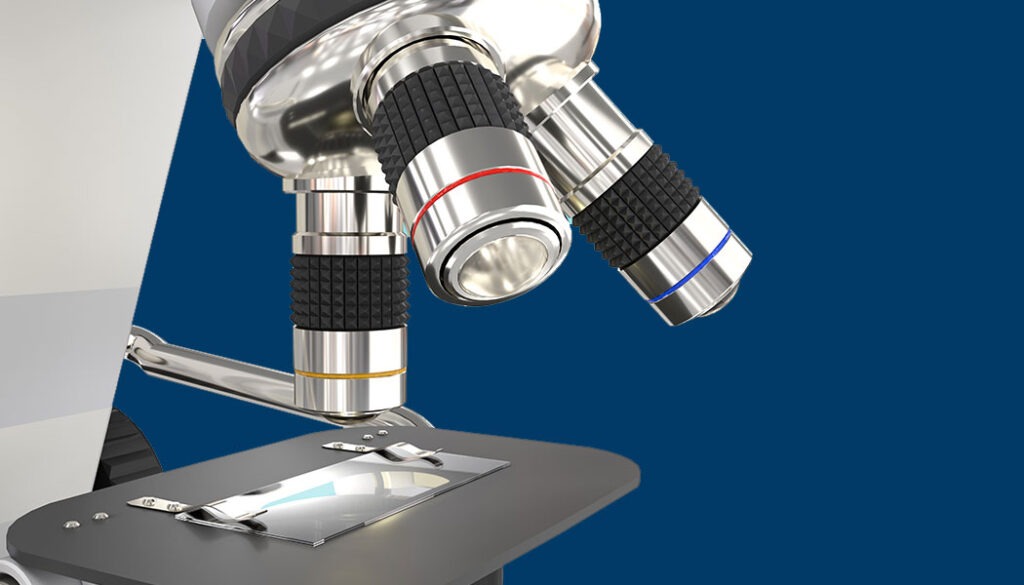A groundbreaking advancement in imaging known as scientific CMOS (sCMOS) technology has revolutionized embedded vision. Introduced in 2009, this innovative technology combines the best features of charge-coupled device (CCD) and complementary metal-oxide-semiconductor (CMOS) technologies, ushering in a new era of high-speed, high-quality imaging. The impact of sCMOS on embedded vision is profound, transforming industries from medical imaging to industrial inspection and smart cities. This article delves into how sCMOS technology has redefined the boundaries of embedded vision and unlocked new possibilities.
Definition and development of sCMOS technology
sCMOS (or Scientific CMOS) is a new sensor technology primarily aimed at enhancing imaging in scientific and industrial applications. This innovation delivers exceptional sensitivity, minimal noise, and a broad dynamic range, making it ideal for scientific and industrial use. It effectively bridges the gap between CCD and CMOS sensors, offering superior image quality and low noise while maintaining the speed and power efficiency of CMOS sensors.
sCMOS technology has rapidly been integrated into a wide range of applications, especially in areas that require a good balance between sensitivity, resolution, and dynamic range. Some of the most modern imaging sensors used in embedded vision are based on the sCMOS technology. Within such a short period of invention, they have found their way into many embedded vision applications, such as medical imaging, astronomical observation, and industrial inspection.

Technical features of sCMOS technology
The best way to understand the technical features of sCMOS sensors is to compare them with CCD and CMOS sensors. Let us look at the differences between key sensors and imaging parameters.
Comparison with CCD sensors
- Speed and power efficiency: CCD sensors are praised for their superior image quality and minimal noise but lack speed and power efficiency. On the other hand, sCMOS sensors deliver rapid imaging while consuming substantially less power.
- Dynamic range: sCMOS sensors outperform CCDs in dynamic range, enabling wider luminosity coverage.
Comparison with conventional CMOS sensors
- Image quality and noise: Traditional CMOS sensors often exhibit greater noise levels and relatively lower image quality. However, sCMOS technology achieves the low noise levels of CCDs yet retains the imaging quality of CMOS sensors.
- Quantum efficiency: sCMOS sensors often have higher quantum efficiency than normal CMOS sensors, which means they convert photons into electrons more efficiently for image capture.
Key Features of sCMOS sensors
- Low readout noise: sCMOS technology is well-known for its exceptionally low readout noise, which is critical for applications that need minute details of the object. Life sciences and microscopic devices are great examples of this.
- Wide dynamic range: A unique property of sCMOS sensors is their ability to record extremely bright and dark objects in a single picture without saturation. Since many embedded vision systems (smart surveillance devices, for example) must operate in varying light conditions, a high dynamic range camera is essential. sCMOS cameras can be a great choice here.
- High quantum efficiency: This corresponds to the sensor’s ability to convert incoming photons into usable electrons, directly impacting the sensor’s sensitivity. This can be extremely helpful for camera systems operating at night or in low-light environments.
- High resolution: sCMOS sensors can capture minute details required for scientific research and industrial inspection applications. Since sCMOS sensors is a new entrant to the imaging space, they tend to have relatively higher resolutions. However, it is to be noted that CMOS and CCD sensors can also come with high resolutions.
- Large field of view: They have a large field of view, which is useful for applications that require wide-area coverage without sacrificing detail. This again depends on many factors, such as the sensor size and lens field of view. Since sCMOS sensors are primarily designed for scientific, medical, and industrial applications, most come with a large field of view.
The architecture of sCMOS sensors
In this section, let us look at a couple of architectural characteristics of sCMOS sensors.
- Pixel structure and signal paths: The sCMOS sensor is equipped with a dedicated amplifier for each pixel, reducing readout noise and enhancing speed. This unique pixel amplification feature enables the simultaneous capture of high-speed, high-resolution images.
- Dual-level amplifiers and dual 11-bit A/D Converters: This is a distinctive feature that makes the wide dynamic range of sCMOS sensors possible. It involves dual amplifiers operating at different gains, with one amplifier dedicated to bright regions and the other to dark regions of an image. Additionally, dual analog-to-digital (A/D) converters contribute to more accurate digital conversion of analog signals, thereby preserving image quality and detail.
Applications of sCMOS sensors in various fields
Life Sciences
- Live-cell microscopy: In live-cell microscopy, sCMOS sensors offer significant advantages in capturing images at high sensitivity. This enables the observation and recording of rapid cellular processes while maintaining image quality. Additionally, the low noise and high sensitivity of sCMOS technology make it well-suited for detecting single molecules, essential for studying molecular dynamics and interactions at the individual molecule level.
- Super-resolution microscopy: sCMOS cameras, known for their high resolution and expansive field of vision, are ideal for super-resolution imaging techniques. These approaches go beyond the limitations of light diffraction, resulting in more intricate images of cells and molecules.
- Genome sequencing: sCMOS technology improves imaging capabilities for methods such as fluorescence in situ hybridization (FISH), which maps genetic material in cells. The use of this technology extends to various fields within life sciences, including drug discovery, neuroimaging, and developmental biology, where high-quality imaging is crucial.
Embedded vision and industry applications of sCMOS sensors
- Machine vision: sCMOS sensors have become more prevalent in manufacturing automation and quality control for machine vision systems. Their ability to capture high-resolution images with high sensitivity allows for accurate and swift product inspection.
- Sports broadcasting: sCMOS sensors with high dynamic range and resolution enable sports broadcasting and analytics systems to capture high-quality images in all lighting conditions.
- Photovoltaic inspection: sCMOS cameras play a vital role in examining solar panels, as their ability to detect even the tiniest microcracks and flaws that impact the panels’ efficiency relies heavily on their sensitivity and resolution.
- X-ray tomography: The sCMOS sensors’ ability to capture a wide range of dynamics and their high quantum efficiency make them well-suited for X-ray imaging, producing clearer and more intricate images.
- Automotive industry: ADAS relies on sCMOS sensors to deliver high-resolution, real-time imaging for lane departure warnings, pedestrian detection, and traffic sign recognition. sCMOS sensors are also used in other smart city applications like parking lot management, smart buses, and smart street lighting systems.
- Medical imaging: Medical devices like endoscopes and intraoperative imaging tools utilize sCMOS technology to produce high-quality images, improving the accuracy of diagnoses and treatments in embedded vision systems. Point-of-care devices like retina scanners, skin scanners, and fundus cameras also make use of the sCMOS technology.

- Industrial automation: sCMOS-based vision systems in manufacturing allow for accurate quality control and defect detection, even when operating at high production speeds. This ensures that automated processes are efficient and precise. In addition to inspection, sCMOS sensors are used in industrial robots, automated forklifts, and parcel dimensioning systems.
- Aerial imaging and surveillance: sCMOS sensors are utilized in drones and surveillance systems to provide high-resolution, wide-area imaging for monitoring, mapping, and surveillance.
sCMOS - prospects and evolving technologies
With continuous improvements, the future of sCMOS technology in embedded vision seems bright. The following trends and developments will characterize the future:
- Efficiency and miniaturization: As sCMOS sensors grow smaller, they can be integrated into increasingly compact and power-efficient embedded vision systems without compromising image quality. Handheld devices like industrial tablets, barcode scanners, and wound measurement systems will highly benefit from this.
- Increased sensitivity and resolution: To further boost sCMOS sensors’ performance in low-light and high-detail imaging, research focuses on increasing their quantum efficiency and resolution.
- Integration of AI and Machine Learning: Combining AI and machine learning with sCMOS technology will result in smarter, more autonomous embedded vision systems capable of complex image processing and decision-making. This can find applications in automated medical diagnosis, intelligent city traffic management, and behavioral analyses.
- Customization for specific applications: Future developments may involve sCMOS technology customization for specific applications, such as adjusting sensors for certain environmental conditions or imaging needs. In fact, this is already happening. The coming years will see an increased inclination towards customized sCMOS cameras with new and innovative applications emerging in embedded vision.
TechNexion – developing future-proof camera modules
With its wide portfolio and engineering expertise, TechNexion is well-positioned to offer cameras for any advanced embedded vision system type. We are dedicated to staying at the forefront of embedded vision technology innovation by building new-age products, including cameras that can be integrated with AI and machine learning for intelligent image analysis.
From sensor selection to picking the right lens and integrating cameras into your vision system, TechNexion can help you with the entire product development journey. Contact us today to accelerate your camera integration.
- Definition and development of sCMOS technology
- Technical features of sCMOS technology
- Key Features of sCMOS sensors
- The architecture of sCMOS sensors
- Applications of sCMOS sensors in various fields
- Embedded vision and industry applications of sCMOS sensors
- sCMOS - prospects and evolving technologies
- TechNexion â developing future-proof camera modules
